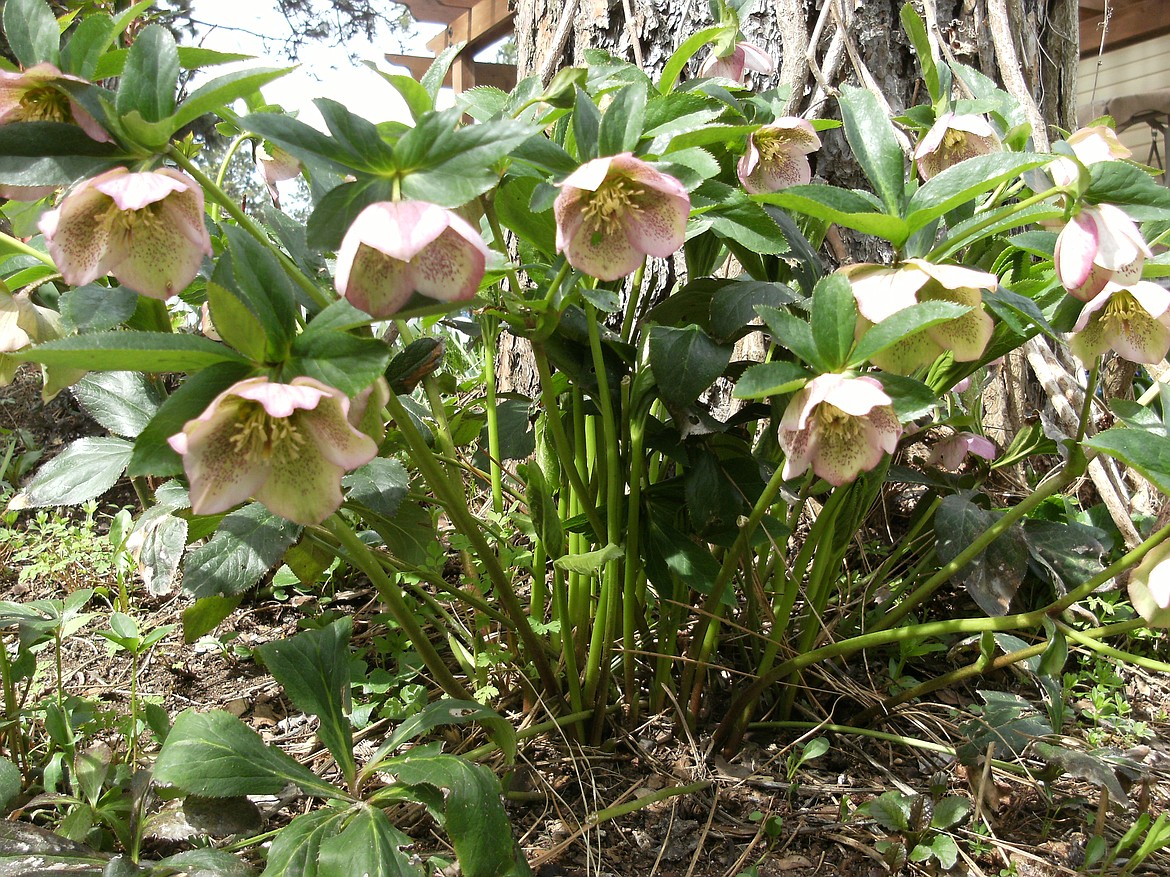MY GARDEN PATH: Let the 'fun' begin!
As you can tell by the picture, Lenton roses are not actually roses at all. They are a very hardy perennial and are one of the first things to bloom each spring, thus the name. These plants are easy to grow and prefer a shady location.
For those of us who have spent the winter reading, working jigsaw puzzles and other “exciting” things, it's time to go to work. Look around and you'll probably see another indication of spring … yellow forsythia shrubs in bloom.
If you haven't already done so, you'll need to spruce up those beds. Cut down any and all remaining dead stalks. Rake the debris out of the beds and you'll be able to see what's been hiding under there. By that, I mean things like young weeds. Dig them out as it's easier to do that now than to wait until they get big, produce seeds, and have a deep taproot that will need to come out.
Other spring bloomers are also doing their thing now. Lots of daffodils, crocus and primroses are in full bloom. Unfortunately, the dandelions won't be far behind them. Grab that trowel and dig out any of those when you find them as you sure don't want them to bloom and spread seeds all over your yard.
With rose bushes beginning to leaf out, it's time to do some pruning. Grab your shears and give them each a haircut. Don't forget your gloves. Those rose thorns pack a mighty wallop. You'll need to decide how much you want to remove. Start with the dead canes. Cut them back to a live section and cut them off just inside a green area preferably just above an outward facing leaf bud. Be sure to remove any excess growth in the center of the plant as this can promote nasty things like powdery mildew as time goes by. As soon as they show an inch or two of growth, sprinkle some rose food around the base and carefully scratch it into the soil. Water and you're good to go.
One reminder about pruning. When it comes to trees, the only times you should NOT prune them is when they're either opening new leaves or losing old ones. Any other time is fine.
Now that April has arrived, it's time to set out the “welcome mat” for the hummingbirds. They usually arrive here right around April 15. Go ahead and get out those feeders. Mix up some food using 1/4 cup of sugar to 1 cup of boiling water. Stir to dissolve, then cool and fill the feeder. Hang in an open area which will be easily seen by arriving hummers. These little guys are our smallest migrating birds and will be mighty hungry when they get here.
The most common variety of hummingbirds to visit our area is the Calliope. The males are easily identified by the purple stripes that run from under their chins and down their chests. These stripes show up well against the white of their chest feathers. Hummers not only dine on sugar water, they enjoy pollen from a variety of flowers and will snag and eat tiny flying insects such as gnats and mosquitoes. Anything that gets rid of those pests are OK in my book.
“Ask a Master Gardener” plant clinic has a new location: UI Research Park, 958 Lochsa St. in Post Falls. They take walk-ins from 9 a.m. to 3 p.m. on Tuesdays and Thursdays through Sept. 30. For info: www.uidaho.edu/Kootenai/Garden.
Another cute sign says “We Dig This Place.” Yes, we do.
• • •
Elaine Cerny has gardened most of her life, starting in 4-H. She has belonged to garden clubs in three states and is an active member of the River City Gardeners Club in Post Falls. Her column has appeared in The Press every other Sunday from early March to late October for the past 12 years and is now into year 13.

